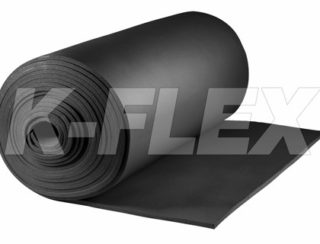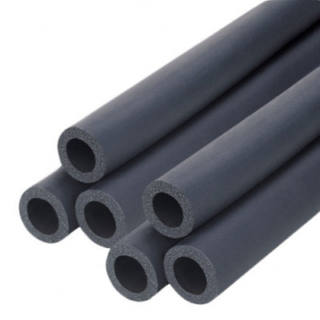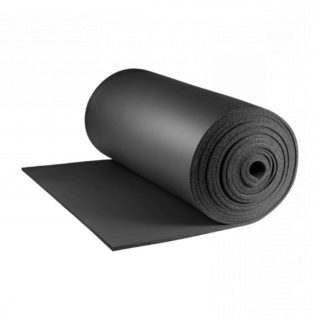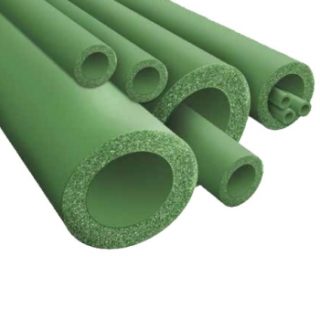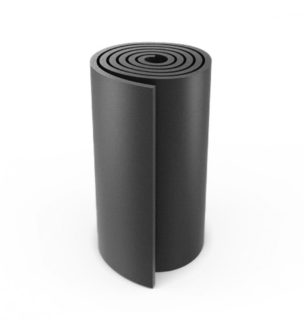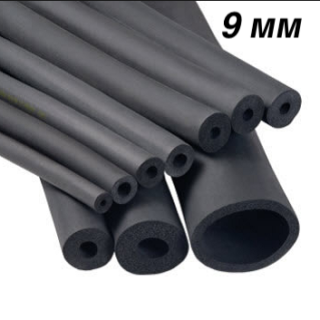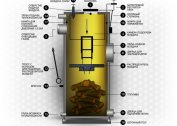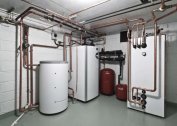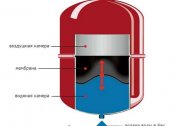Thermal insulation of engineering systems is necessary to solve a whole range of problems. It allows you to reduce heat loss on the way to the consumer, protect the contents from the harmful effects of the environment, reduce energy consumption and extend the operating life. Technical insulation for K Flex pipes is one of the most advanced and effective thermal protection options.
Kaflex thermal insulation characteristics
Thermal insulation K Flex is made of foamed synthetic rubber with various additives, due to which it has high operational and thermal properties.
Technical characteristics of pipe insulation K Flex:
- Low thermal conductivity, which is ensured by high porosity in combination with small cells.
- Low vapor permeability. The insulation for K Flex pipes has a porous structure with closed cells, which provides high resistance to drip moisture and vaporization. Throughout the entire operational period, the design does not accumulate moisture, and the heat-shielding properties do not undergo transformations.
- High technology installation.
- A wide range of operating temperatures, the performance of which ranges from -198 - +150 degrees.
- Durability. The manufacturer claims that the operational life of the material during thermal aging will be at least 25 years.
Technical specifications of almost all modifications are similar, but there are distinctive features that you need to familiarize yourself with before buying.
Types of insulation Kaflex
Thermal insulation for K Flex pipes is divided into several varieties, each of which differs in character and stones and scope.
Thermal insulation K Flex ST
This modification is able to function uninterruptedly at a temperature mode from - 200 to +105 degrees Celsius. The thermal conductivity at -20 degrees is 0.034, and at +20 - 0.038.
The material is actively used in the following industries:
- refrigeration equipment;
- petrochemical facilities;
- ventilation systems and air conditioning;
- industrial pipelines;
- heating and water supply systems.
The advantages of K Flex ST are neutral odor, environmental safety and biological resistance. Fire safety - G1.
K Flex Solar HT
Used at operating temperatures up to +150 degrees. It is actively applied in the following industries:
- low pressure steam lines in which the temperature regime does not exceed +150 degrees;
- solar systems;
- pipelines and industrial equipment;
- high temperature insulation.
The coefficient of thermal conductivity at a temperature of +20 degrees is 0.04, and at +60 - 0.045. Belongs to the fire safety class - G1.
The sheet insulation layer has a neutral odor.
K-Flex ECO
It is actively used in the following areas:
- Metro stations;
- pharmaceutical manufacturing;
- railway transport and airports;
- offshore platforms;
- computer centers;
- construction of ships and ships;
- food production;
- hospitals;
- clean rooms;
- preschool institutions, schools.
The material is characterized by the following indicators of thermal conductivity: at -20 - 0.036, and at +20 - 0.04. Fire safety belongs to the class G2, RP1, T2. Designed to operate in temperature conditions from -70 to +150 degrees.
ECO insulation has neutral acidity, the smell is neutral, the color is green.
Heater for pipes Kafleks IGO
The material is used in the following industries:
- for thermal insulation of welds;
- in the construction of thermal insulation;
- for industrial pipelines that are laid above- and underground.
Operating temperature range from -60 to +105 degrees. Thermal conductivity at 0 degrees - 0.044, +20 - 0.046. The color is black, the smell is neutral. Fire safety class - G2.
Heater K-Flex for pipes ST / SK
This modification is a pre-cut roll insulation, on the surface of which special glue is contained. Thanks to the adhesive mass, the material becomes tubular. The technology provides ease of use and high installation speed.
It is applied in the following cases:
- cooling lines;
- laying of pipelines;
- ventilation and air conditioning systems.
It has a black color, a neutral acidity indicator is characteristic of the material. The thermal conductivity coefficient is at -20 degrees - 0.034 and at +20 - 0.038.
A wide variety of thermal insulation materials allows the use of insulation as efficiently as possible in any conditions. Before buying, it is important to consider all the requirements.
Advantages and disadvantages
Product manufacturer K Flex is very popular due to its many advantages. All modifications are characterized by increased thermal insulation properties, as well as:
- environmental Safety;
- long service life - the manufacturer assures that the minimum service life is 25 years, in fact, users note that more;
- high installation manufacturability - when installing thermal insulation there is no need to additionally use vapor barrier layers, fasteners are not needed;
- increased resistance to temperature fluctuations - the range of operating temperature ranges from -195 to +150 degrees;
- hydrophobicity;
- protection against corrosion;
- low vapor permeability and thermal conductivity;
- resistance to aggressive environmental factors.
Another important fact is that all materials produced by the company do not emit intoxicants and toxic substances into the environment. All have a neutral smell.
Thanks to a wide variety of building materials, it is possible to solve a wide variety of problems. This product is especially in demand with rotary technical systems, since they are characterized by increased tensile strength and high elasticity.
Of the shortcomings, only the high cost of products of the Italian manufacturer can be distinguished.
Installation methods
 It is possible to carry out installation work at a temperature not lower than +5 degrees. The work surface must first be cleaned and degreased. Only by observing these important rules will it be possible to achieve high-quality adhesion of the insulating material.
It is possible to carry out installation work at a temperature not lower than +5 degrees. The work surface must first be cleaned and degreased. Only by observing these important rules will it be possible to achieve high-quality adhesion of the insulating material.
The installation process begins with the uniform application of a thin layer of adhesive mass on the surface of the pipe and the inner part of the heat insulator. To glue penetrated deep into the layers of the material, you need to wait about 2-3 minutes. If self-adhesive modifications are used, this step is skipped. The insulation must be laid on the pipe so that the seam passes along its lower part. At the end, the surface to be glued needs to be smoothed out with a little effort.
